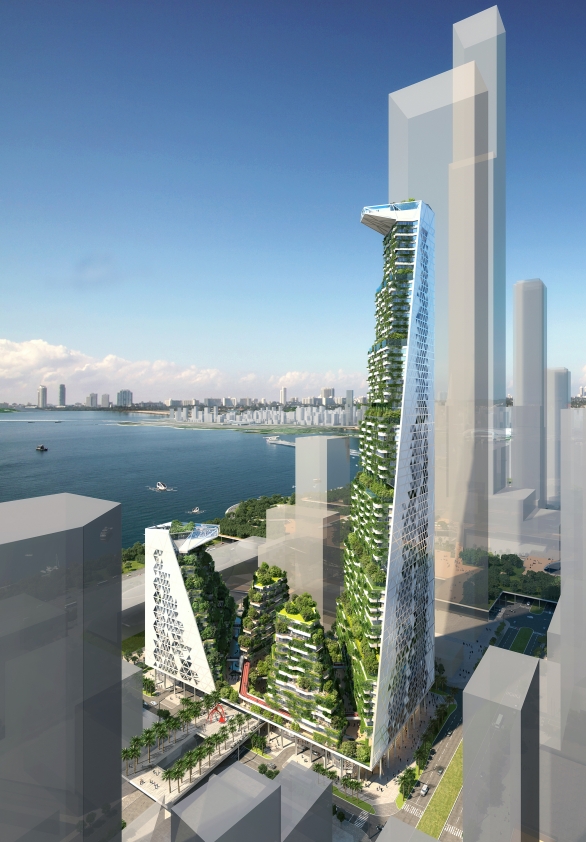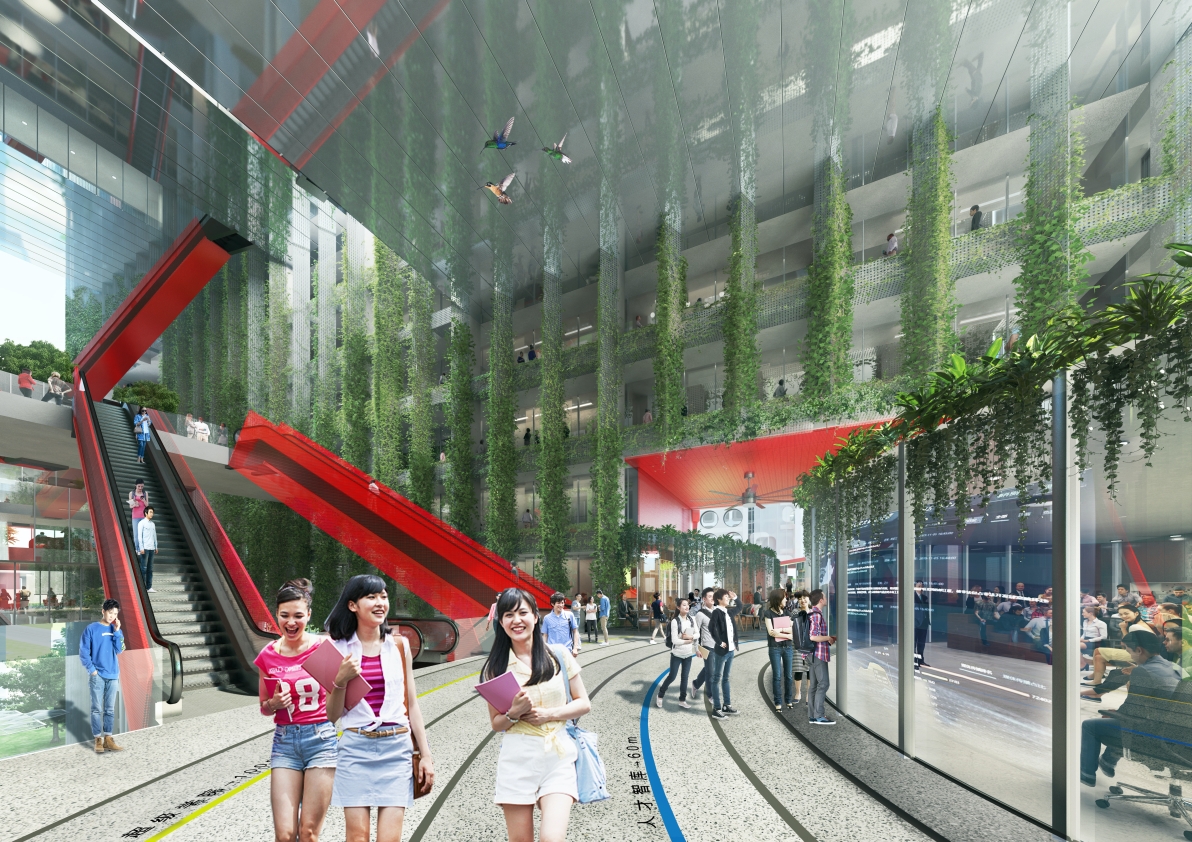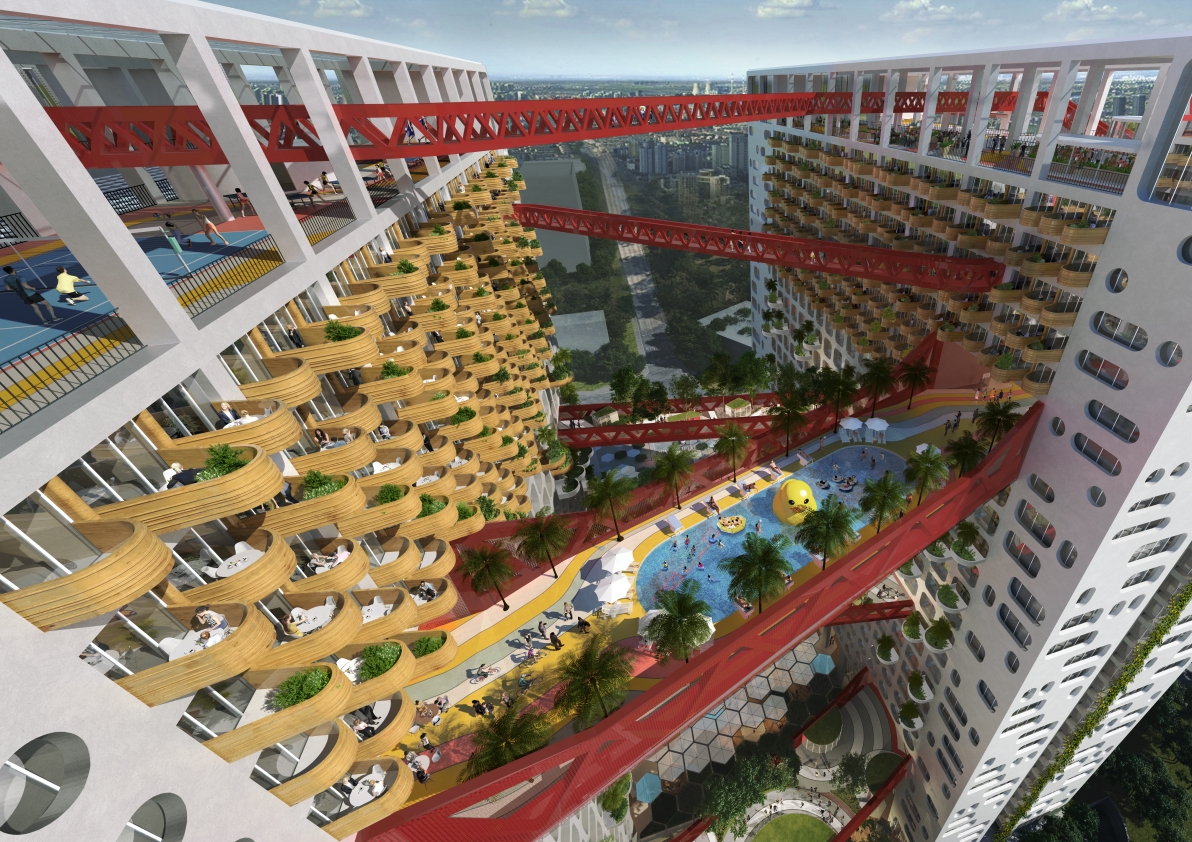深圳万科总部综合体
This schematic design for a mixed-use development in Shenzhen brings back nature and a human scale to the dense urban district in the form of a new vertical regenerative campus headquarters typology.
Designed for a unique site consisting of two adjacent plots in Shenzhen, the scheme looks out onto the water towards Hong Kong.
Its outer, sleek, angular envelope contrasts with its inner, lush urban oasis that brings nature back into a dense city environment. Reminiscent of a “slice” of a mountain it provides ecosystem services like sequestering carbon, phytoremediation of acidic rain, reducing pollutants in the air and turning carbon dioxide to oxygen.
The holistic design fully integrates the different programs of this mixed-use development, creating connections, and community spaces for all users.
The towers respond to each other, facing each other to create beautiful green views for the spaces that do not face the sea. They sit on an elevated podium that gives the development a new ground level and connects the different programs to each other.
Waterfalls and greenery turn the podium into a lush public space, refuge floors are turned into landscaped parks in the sky.
In order to foster community in a large development, plenty of sociable common spaces, both within the buildings and in the publicly accessible areas, have been included in the design. Recreational amenities like running and hiking tracks amongst the ‘mountains’ are woven into the design. The multi-functional spaces provide friendly, biophilic environments for users and passers-by alike.
































